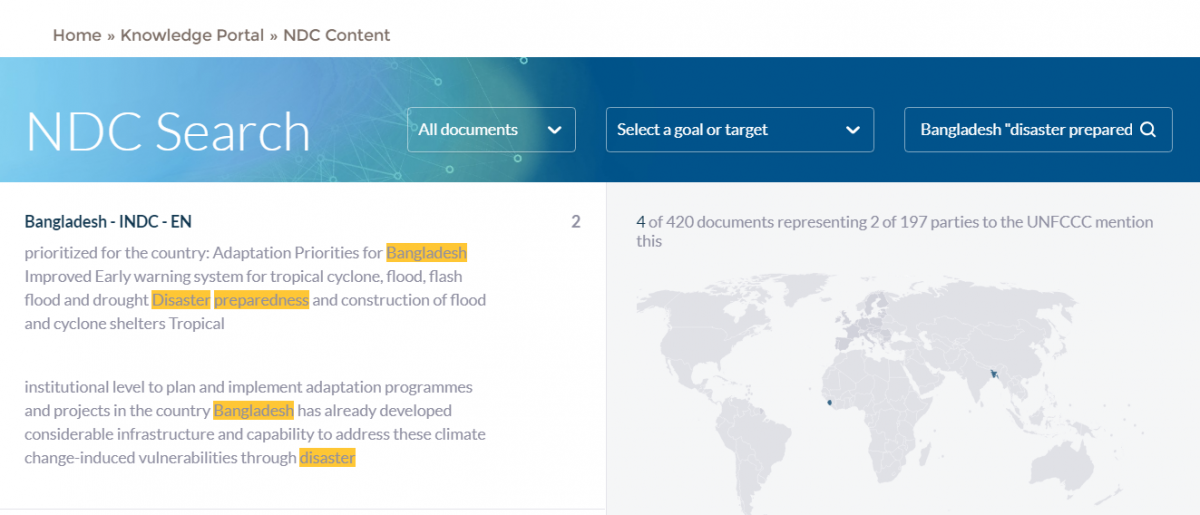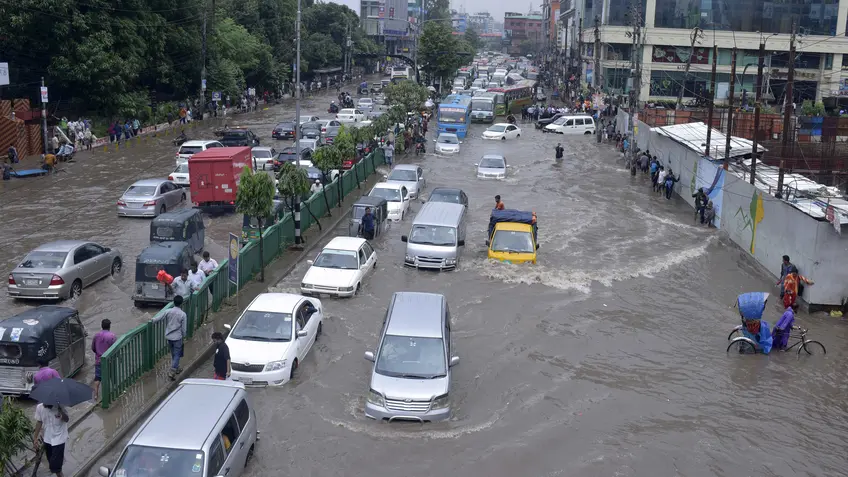Applying Knowledge to Implement Disaster Risk Reduction
The worldwide increase in number and severity of disasters was one of the catalysts that led 175 Parties to sign the Paris Agreement in which Parties agreed to create Nationally Determined Contributions (NDCs), documenting pledged efforts by each Party to limit warming to below 2 degrees Celsius above pre-industrial levels and to adapt to the effects of a changing climate. As frequency and severity of natural disasters continues to rise, countries are using their NDCs as an opportunity to work towards reducing the risk and impact of these disasters - 83 countries discuss disaster risks in their NDCs.
Because NDCs do not usually come with a roadmap for implementation, it is up to government officials and policy-makers to decide how to reach their NDC disaster risk reduction targets. To navigate this challenging yet vital process, stakeholders can turn to the NDC Partnership’s Knowledge Portal for tools along every step of the way.
This blog will walk you through the different ways you and other relevant stakeholders can use the NDC Partnership Knowledge Portal to implement disaster risk reduction actions.
Understanding Disaster Risk and Opportunities for Resilience
The NDC Content Module provides country-specific background information on disaster risk reduction. By typing “disaster risk reduction” directly into the search bar and selecting the country of interest, you can see where disaster risk reduction is mentioned in the country’s NDC. For example, Bangladesh, one of the countries most devastated by the 2017 flooding in Southeast Asia, discusses construction of flood and cyclone shelters in its NDC. Other countries subjected to similar environmental pressures can easily view this information to better understand how to weave cyclone shelters, in this case, into their NDC planning.

Discussion of Disaster preparedness and construction of flood and cyclone shelters in Bangladesh’s INDC.
If unsure how to reach disaster risk reduction targets, visit the Good Practice Database and filter by “disaster risk reduction” to explore how other countries have tackled this issue. Countries planning for rising sea-levels may want to view cases like Embedding climate change resilience in coastal city planning: early lessons from Cartagena de Indias, Colombia or Restoration of Mangrove Forests in Vietnam. Selecting cases from countries with similar circumstances to one’s own can unearth transferable ideas that can be used to meet NDC targets.
Building Concrete Plans
After getting ideas and inspiration from the NDC Content Module and the Good Practice Database, you can develop plans by using the Climate Toolbox, which contains tools, guidance, platforms, and advisory support that can be used to plan for disaster risk reduction. For example, the policy-maker planning for rising sea levels could filter by “disaster risk reduction” and then filter further depending on where they are in their planning process, for instance “develop an implementation plan.” Available resources include Toolkit for Increasing Climate Change Resilience.

The Climate Toolbox, with its many filters. Don’t forget, some filters have sub-filters!
Searching for and accessing climate finance
Finance is necessary for any plan to reach fruition. Accessing finance is complex because of the multitude of different climate funds available. Often, it is unclear who is eligible for funding, which activities are eligible, or how to access financing. As an effort to demystify climate finance, the NDC Partnership created the Climate Finance Explorer, an easily searchable database of climate funds. Filtering by “disaster risk reduction” and by the relevant country, you can see what funds are available to support a project and how to apply for funding. When looking at financing geared towards sea-level rise, for example, many countries are eligible for the Global Climate Change Alliance (GCCA+) and the Adaptation Fund. After identifying relevant funding opportunities, you can use the steps to access feature on the Climate Finance Explorer to understand how to access each fund.

The Climate Finance Explorer, filtered by disaster risk reduction.
The Knowledge Portal’s Many Facets
Careful planning, especially through NDC implementation, can help mitigate the losses brought on by natural disasters. In addition to disaster risk reduction resources, the Knowledge Portal includes tools, guidance platforms, advisory support, and finance opportunities for eighteen other sectors and themes relevant to NDC implementation and climate change. Now it’s your turn to explore.
This blog was written by Noah Maghsadi, Knowledge and Learning Intern for the NDC Partnership Support Unit.
